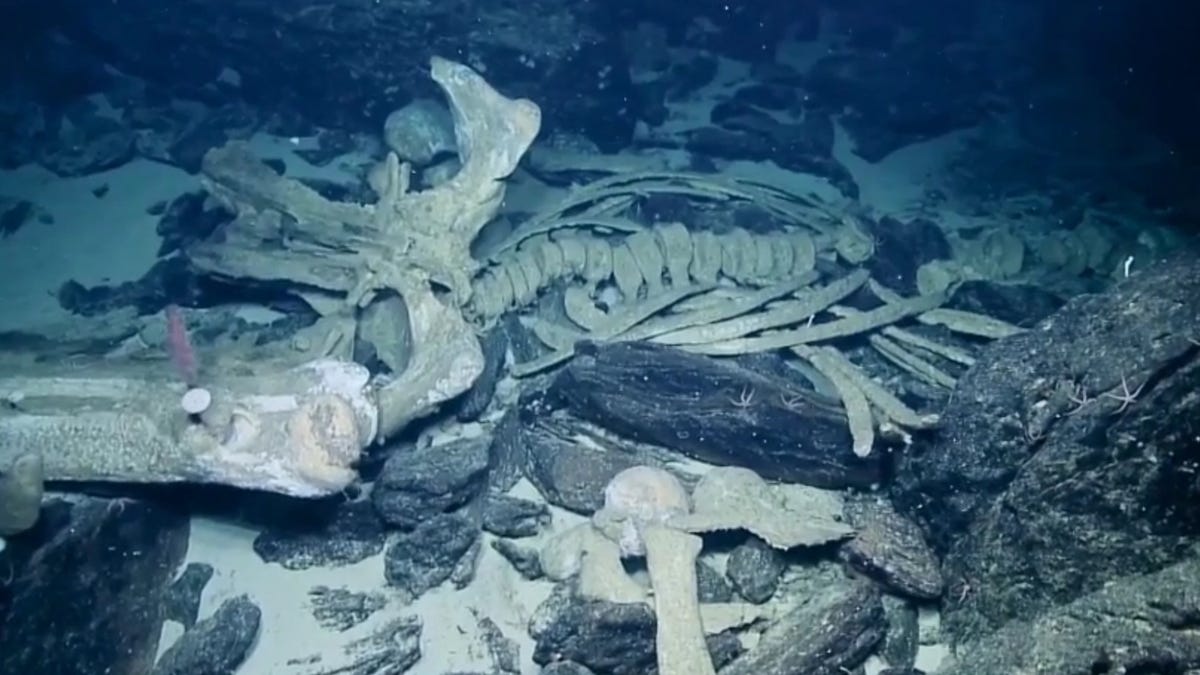Eerily complete whale skeleton found on bottom of sea
Whale I'll be. A submarine crew spots the mammal's bones, complete with weird wiffleball-like growths, decomposing off the California coast.
Even the biggest living creatures sometimes die quietly and slip unnoticed to their rest. A giant whale might have done just that if not for the crew of the research vessel Nautilus. They spotted the whale's mostly complete skeleton decomposing off the California coast on Monday.
"Coming across a natural whale fall is pretty uncommon," one of the researchers says in a video posted to YouTube. A "whale fall" is the rather romantic phrase used when a whale's carcass sinks to the ocean floor, where it provides a buffet bonanza for smaller sea creatures.
"The whale skeleton can support rich communities for years to decades, both as a hard substrate (or surface) for invertebrate colonization and as a source of sulfides from the decay of organic compounds of whale bones," the National Ocean Service explains on its site. "Microbes live off of the energy released from these chemical reactions and form the basis of ecosystems for as long as the food source lasts.
That's right. While to us, the whale's skeleton is kind of a cool, if sad, sight to see, to Aquaman's buddies, it's like a bunch of Golden Corrals opened up on the same block, and they forgot to put any prices on the menu.
The whale itself was a baleen whale, researchers judged from its toothless jaw, and they noted that it could've been a juvenile based on its size.
The researchers spotted worms on the carcass, and noted that these creatures can burrow down into the whale's bones and digest the lipids. "A lot of the times what you see at the surface are actually all females," a researcher says of the worms. "And then there are males living within the female. They're a really weird species."
Two small growths that look exactly like wiffleballs also appeared to be sprouting from the bones. "Wow, two mysterious orbs in two weeks," joked one researcher, referring to last week's discovery of a purple orb found last week that may be a new species of nudibranch.


